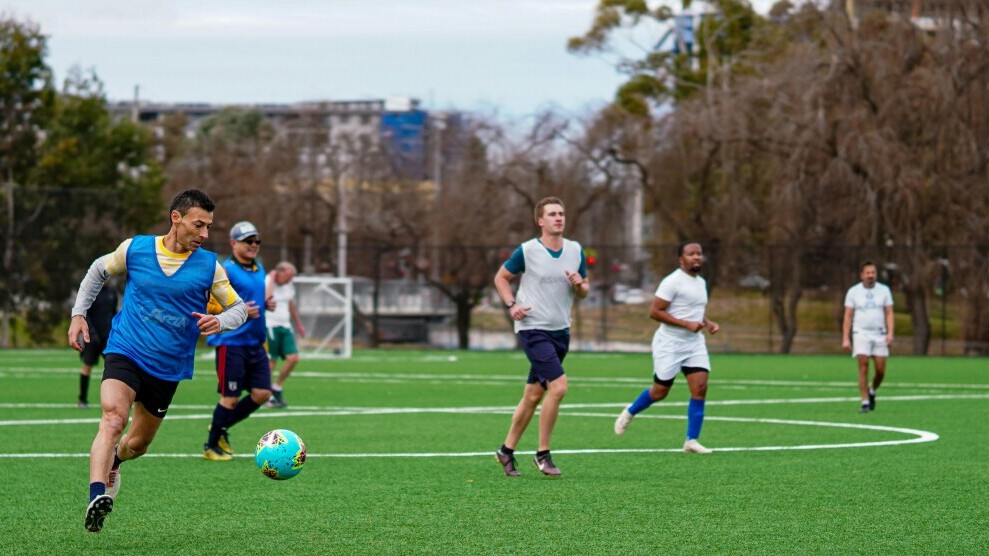
Soccer fitness means a lot more than just being able to run up and down the field for ninety minutes. It’s about being ready to perform under pressure, making quick decisions, and avoiding injuries. Whether you’re playing in the World Cup or just having a kick-about with your friends, being physically prepared is crucial.
What separates pros from amateurs on the field, physically speaking? For professionals, it’s all about specialized training that focuses on skills like explosive speed, impressive endurance, and the agility to turn on a dime. Meanwhile, amateurs might aim for a broad fitness base but aren’t usually as fine-tuned.
Let’s talk about those physical demands. A pro has to be sharp in every aspect of the game, from the start whistle to the final whistle. They need lean muscle, incredible balance, and fast recovery times. Amateurs, while maybe not needing to be that intense, still benefit from getting their bodies game-ready. This means focusing on aerobic fitness to keep energy levels high, strength to hold their own during contact, and agility to react fast.
Being fit in soccer isn’t just about what happens during the match. For pros, their fitness level directly affects their match performance, influencing everything from speed and strength to decision-making under pressure. For amateurs, while the stakes mightn’t be as high, being fit can mean the difference between enjoying a game and struggling to keep up.
Whether you’re aiming to go pro or just looking to enjoy the game more with your pals, understanding the physical demands of soccer can really up your game. Paying attention to fitness levels, no matter how small, could be your secret weapon to either dominate on the field or just have more fun while playing.
Professional Soccer Fitness Drills: Building Elite Athletes
For the pros, soccer demands more than just skill; it’s about being in peak physical condition. The fitness drills they tackle are tailored to push them to be the absolute best.
Intense cardio drills are a staple for professional players. These aren’t your leisurely jogs in the park; this is about endurance and stamina. Think high-intensity interval training (HIIT) that mirrors the stop-start nature of a soccer match, building the kind of gas tank that lasts all game.
When it comes to strength, professional players don’t just hit the bench press. They work on functional strength, focusing on the legs, core, and balance. This means plyometrics, squats, and deadlifts that build power where it counts, helping them shield the ball or leap for a header.
Speed, agility, and quickness, often abbreviated to SAQ, form a crucial part of professional fitness regimens. Drills like ladder runs, cone drills, and shuttle sprints keep players nimble and ready to change direction in a heartbeat.
The role of personal trainers and specialized coaches can’t be overstated. These experts develop personalized fitness plans that consider each player’s strengths and weaknesses, ensuring balanced development and reducing injury risks.
And after all this exertion, recovery is key. Nutrition plans tailored to refuel bodies and rehab for sore muscles keep the wheels turning, with recovery sessions often involving stretching, swimming, or yoga.
Professional players’ commitment to these rigorous routines exemplifies what it takes to maintain a spot at the top level. For anyone aiming to get on their level, understanding these elements is crucial.
Amateur Soccer Fitness Routines: Building Strong Foundations
While amateur players don’t need the edge that professionals do, improving fitness is still a game-changer. Working out smart can make soccer way more enjoyable and boost skills, too.
Let’s start with the basics: warm-ups and cool-downs. They’re non-negotiable. Warming up gradually gets the blood flowing and muscles warmed, which helps prevent injuries. Cooling down, with stretching, can ward off next-day soreness.
When cardio is in the mix, keeping it simple goes a long way. Casual runs or cycling can build the endurance needed to keep energy levels steady throughout the game. This isn’t about setting records, but pacing yourself to stay involved in the action.
Flexibility is often overlooked, yet increasing flexibility can reduce injury risk significantly. Regular stretching, or even a bit of yoga, can have a major impact on agility and long-term fitness.
Creating fun and varied workouts keeps everything interesting and motivating. Think five-a-side games with friends or participating in local league matches. Mixing competition with exercise increases both physical and mental gameplay.
For amateurs, juggling fitness and skill drills ensures well-rounded soccer development. Practicing dribbling, passing, or shooting during workouts maximizes improvement and enjoyment. It’s handier than just focusing on one area.
Balancing fitness with skill means keeping challenges in line with your level and having fun while doing it. Staying active, healthy, and consistent builds a strong foundation in soccer.
Commonalities and Differences: Professional Vs Amateur Fitness Approaches
There’s plenty to learn by comparing professional and amateur soccer fitness routines. While both aim for improvement, their approaches, resources, and goals differ significantly, offering a distinct game day experience.
Professional drills can actually be adapted for amateurs. With a bit of modification, components from high-level training can enhance amateur play. Focusing on incremental progress rather than trying to match pro intensity can lead to effective results.
Resource availability is another key difference. Pros have access to elite gyms, equipment, and top-tier coaches, unlike amateurs who might rely on local facilities and self-directed plans. This means amateurs need creativity in using accessible resources, like parks or schools, to mimic the high-intensity workouts.
Cultural and motivational aspects shape how players approach fitness. Pros are driven by competition and career advancement. Amateurs might play for fun, social aspects, or as a hobby, which affects how they train. Social elements in amateur play can be a huge motivational boost, making the whole process enjoyable.
Considering long-term goals, professionals train for sustained careers, often with a larger emphasis on injury prevention and recovery for career longevity. Amateurs focus on enhancing the weekly game experience, without the massive pressure of career implications.
Understanding these distinctions can help everyone involved in soccer, whether striving to go pro or just looking to enjoy a healthier, more active lifestyle. By recognizing what’s possible within your means, keeping training effective and fun is well within reach.
